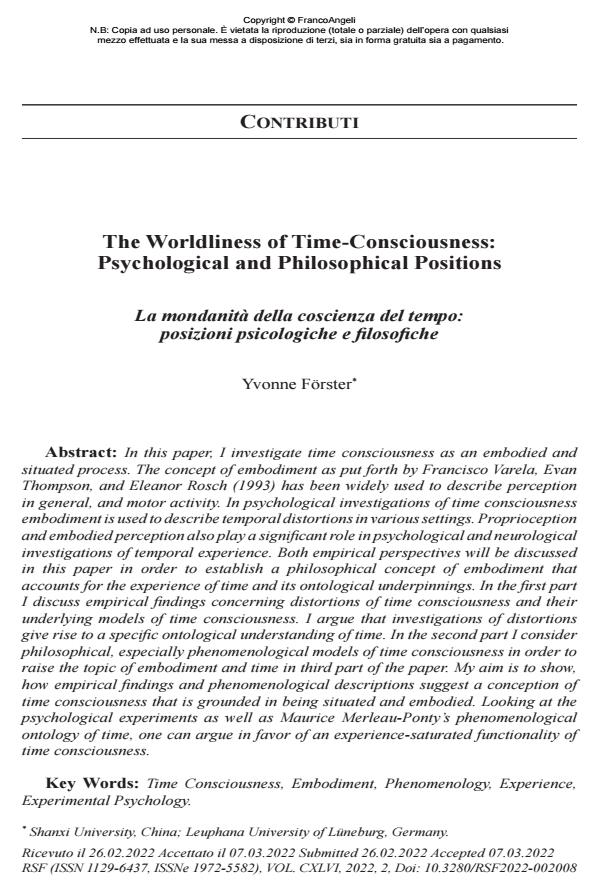The Worldliness of Time-Consciousness: Psychological and Philosophical Positions
Journal title RIVISTA SPERIMENTALE DI FRENIATRIA
Author/s Yvonne Förster
Publishing Year 2022 Issue 2022/2
Language English Pages 15 P. 109-123 File size 166 KB
DOI
DOI is like a bar code for intellectual property: to have more infomation
click here
Below, you can see the article first page
If you want to buy this article in PDF format, you can do it, following the instructions to buy download credits

FrancoAngeli is member of Publishers International Linking Association, Inc (PILA), a not-for-profit association which run the CrossRef service enabling links to and from online scholarly content.
In this paper, I investigate time consciousness as an embodied and situated process. The concept of embodiment as put forth by Francisco Varela, Evan Thompson, and Eleanor Rosch (1993) has been widely used to describe perception in general, and motor activity. In psychological investigations of time consciousness embodiment is used to describe temporal distortions in various settings. Proprioception and embodied perception also play a significant role in psychological and neurological investigations of temporal experience. Both empirical perspectives will be discussed in this paper in order to establish a philosophical concept of embodiment that accounts for the experience of time and its ontological underpinnings. In the first part I discuss empirical findings concerning distortions of time consciousness and their underlying models of time consciousness. I argue that investigations of distortions give rise to a specific ontological understanding of time. In the second part I consider philosophical, especially phenomenological models of time consciousness in order to raise the topic of embodiment and time in third part of the paper. My aim is to show, how empirical findings and phenomenological descriptions suggest a conception of time consciousness that is grounded in being situated and embodied. Looking at the psychological experiments as well as Maurice Merleau-Ponty’s phenomenological ontology of time, one can argue in favor of an experience-saturated functionality of time consciousness.
Keywords: Time Consciousness, Embodiment, Phenomenology, Experience, Experimental Psychology
Yvonne Förster, The Worldliness of Time-Consciousness: Psychological and Philosophical Positions in "RIVISTA SPERIMENTALE DI FRENIATRIA" 2/2022, pp 109-123, DOI: